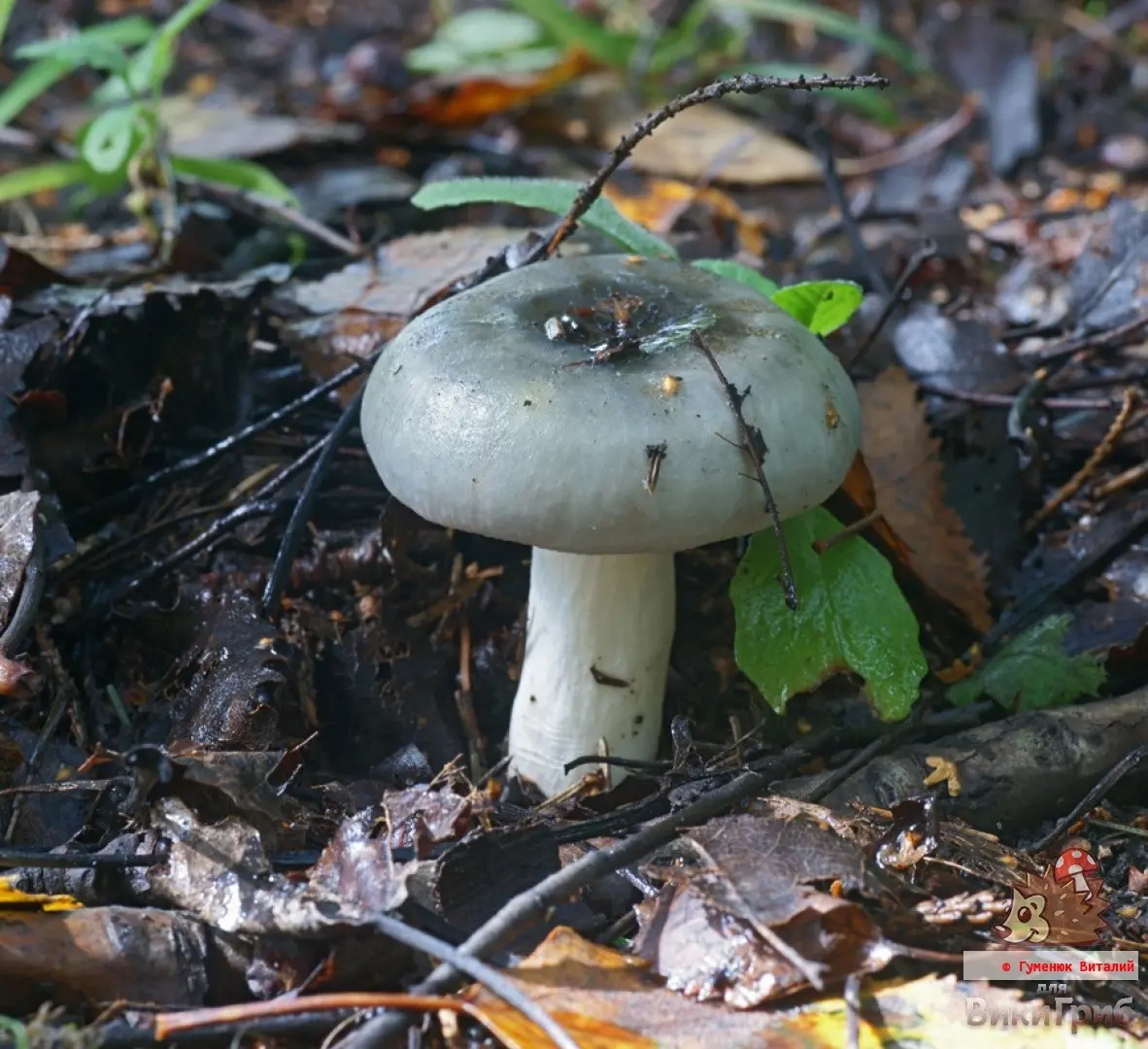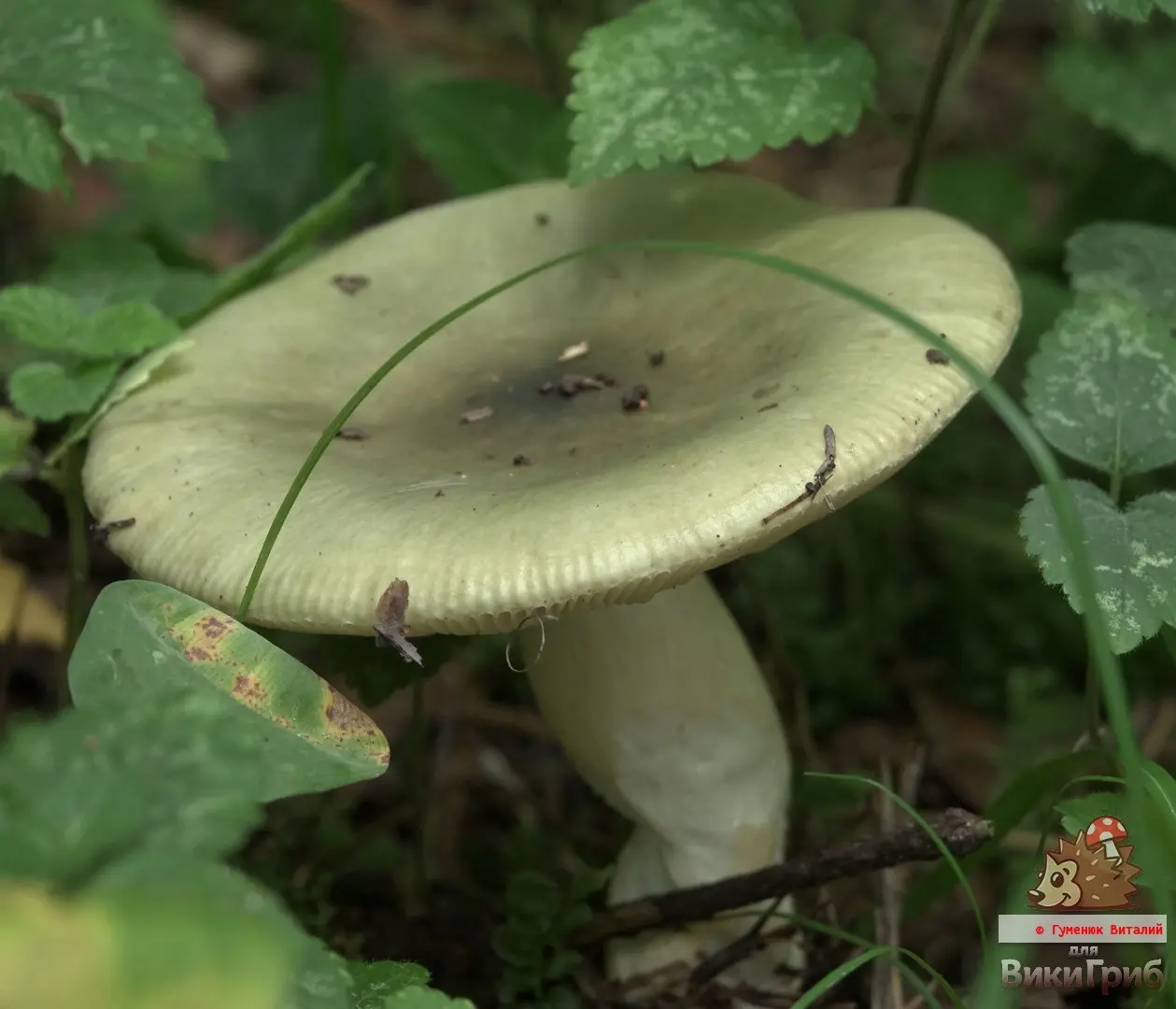Russula green (Russula aeruginea)
- Division: Basidiomycota (Basidiomycetes)
- Subdivision: Agaricomycotina (Agaricomycetes)
- Class: Agaricomycetes (Agaricomycetes)
- Subclass: Incertae sedis (of uncertain position)
- Order: Russulales (Russulovye)
- Family: Russulaceae (Russula)
- Genus: Russula (Russula)
- Type: Russula aeruginea (Russula green)
:
- Grass-green Russula
- Green Russula
- Russula copper-rust
- Russula copper-green
- Russula blue-green

Among the russula with hats in green and greenish tones, it is quite easy to get lost. Russula green can be identified by a number of signs, among which it makes sense to list the most important and most noticeable for a beginner mushroom picker.
It:
- Pretty uniform hat color in shades of green
- Creamy or yellowish imprint of spore powder
- Soft taste
- Slow pink reaction to iron salts on the stem surface
- Other differences are only at the microscopic level.
head: 5-9 centimeters in diameter, possibly up to 10-11 cm (and this is probably not the limit). Convex when young, becoming broadly convex to flat with a shallow depression in the center. Dry or slightly damp, slightly sticky. Smooth or slightly velvety in the central part. In adult specimens, the edges of the cap may be slightly “ribbed”. Greyish green to yellowish green, olive green, slightly darker in the center. “Warm” colors (with the presence of red, for example, brown, brown) are absent. The peel is quite easy to peel about half the radius.

plates: accreted or even slightly descending. They are located close to each other, often branching near the stem. The color of the plates is from almost white, light, creamy, cream to pale yellow, covered with brownish spots in places with age.
Leg: 4-6 cm long, 1-2 cm thick. Central, cylindrical, slightly tapering towards the base. Whitish, dry, smooth. With age, rusty spots may appear closer to the base of the stem. Dense in young mushrooms, then wadded in the central part, in very adults – with a central cavity.
Myakotb: white, in young mushrooms rather dense, fragile with age, wadded. On the edges of the cap is rather thin. Does not change color on a cut and a break.
Smell: no special smell, slight mushroom.
Taste: soft, sometimes sweetish. In young records, according to some sources, “sharp”.
Spore powder imprint: cream to pale yellow.
Споры: 6-10 x 5-7 microns, elliptical, verrucose, incompletely reticulated.
Chemical reactions: KOH on the surface of the cap is orange. Iron salts on the surface of the leg and pulp – slowly pink.
Russula green forms mycorrhiza with deciduous and coniferous species. Among the priorities are spruce, pine and birch.
It grows in summer and autumn, singly or in small clusters, not uncommon.
Widespread in many countries.
Edible mushroom with controversial taste. Old paper guides refer green russula to category 3 and even category 4 mushrooms.
Excellent in salting, suitable for dry salting (only young specimens should be taken).
Sometimes pre-boiling up to 15 minutes is recommended (it is not clear why).
Many sources indicate that the green russula is not recommended for collection, as it can allegedly be confused with the Pale grebe. In my humble opinion, one must absolutely not understand mushrooms in order to take fly agaric for russula. But, just in case, I write: When collecting green russula, be careful! If the mushrooms have a bag at the base of the leg or a “skirt” – it’s not a cheesecake.
In addition to the Pale grebe mentioned above, any kind of russula that has green colors in the color of the cap can be mistaken for green russula.
Photo: Vitaly Humeniuk.









